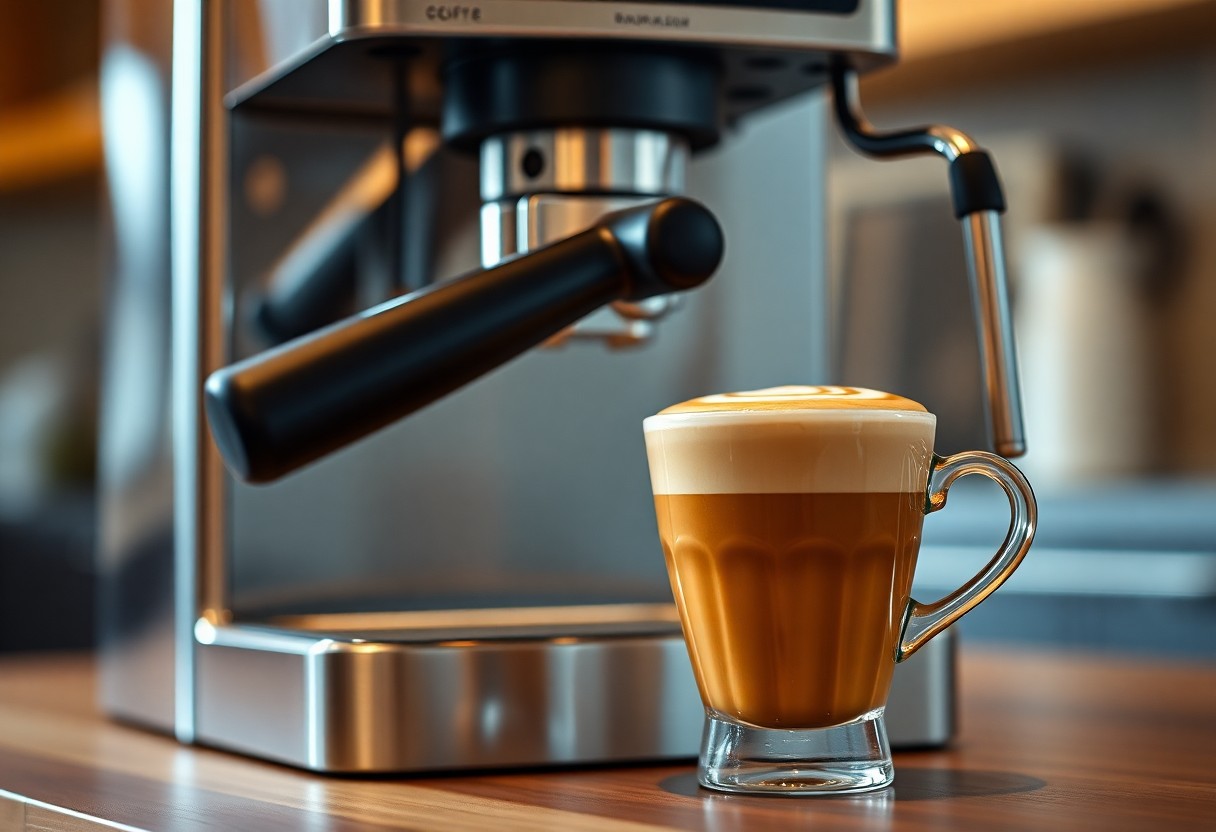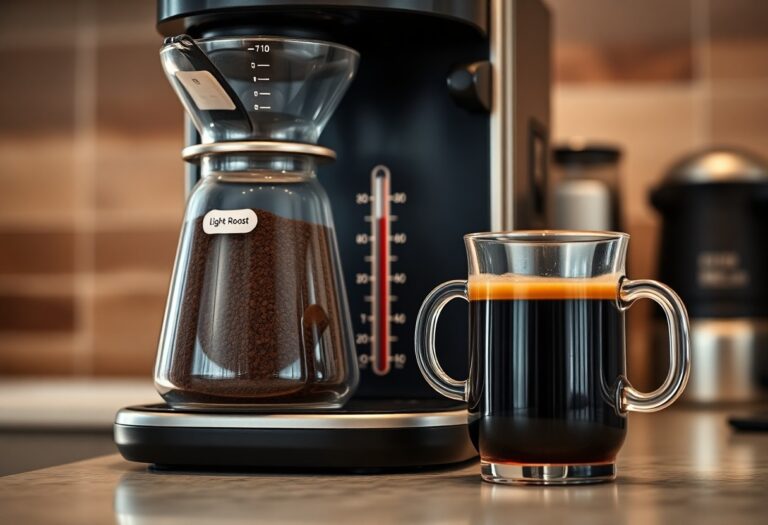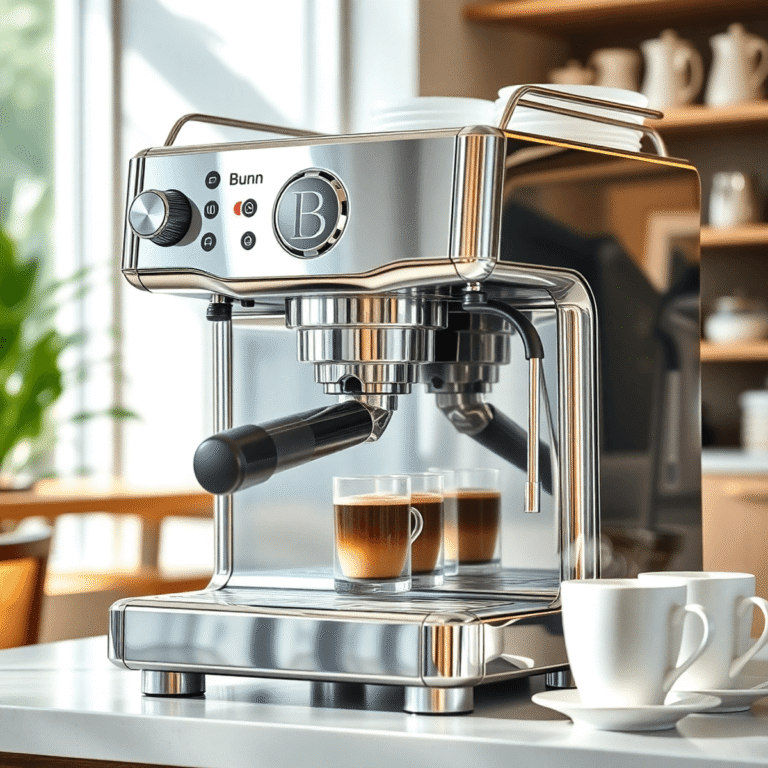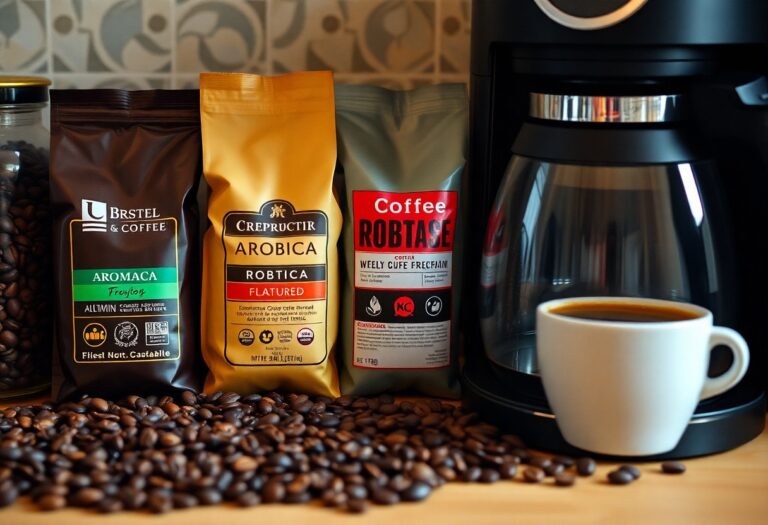What is the Best Coffee Machine for Cappuccino – Milk Frothing
Coffee lovers, when it comes to achieving the perfect cappuccino, the right coffee machine with milk frothing capabilities is necessary. You want a machine that not only delivers rich espresso but also creates velvety froth to elevate your drink. In this post, we’ll explore your options, focusing on ease of use, consistency, and quality of froth, ensuring that your home barista experience is both enjoyable and rewarding. With the right choice, you’ll impress yourself and your guests with café-quality cappuccinos right in your kitchen.
Key Takeaways:
- Look for machines with built-in milk frothers or steam wands for optimal cappuccino preparation.
- Consider the type of milk used; whole milk typically froths better than low-fat or non-dairy alternatives.
- Check reviews for ease of use and cleaning features, as these can greatly enhance your coffee-making experience.
- Evaluate the temperature control settings; precise temperature is key for creating the perfect foam.
- Assess whether you prefer an automatic or manual frothing process, based on your skill level and desired hands-on experience.

The Essential Features for Milk Frothing Mastery
Achieving skillful milk frothing hinges on several vital features. A reliable coffee machine should possess robust steam capabilities, a user-friendly interface, and versatility to accommodate different types of milk. Optimal temperature control also plays a vital role in creating that velvety microfoam vital for a perfect cappuccino. All these elements synergize to enable you to craft café-quality drinks right in your kitchen.
Importance of Steam Pressure in Frothing
Steam pressure serves as a fundamental factor in the frothing process, as it determines how quickly and effectively air is incorporated into the milk. A machine with a higher steam pressure will create a dense microfoam rapidly, which is vital for topping your cappuccino. Relying on machines that can maintain consistent steam pressure ensures you achieve that rich, creamy texture every time.
Types of Frothing Mechanisms and Their Impact
Frothing mechanisms vary significantly in how they create foam, each offering distinct advantages. Manual steam wands provide baristas control over frothing, allowing you to adjust the angle and technique to craft the perfect texture. Automatic frothers simplify the process, ideal for beginners or those short on time. Then, there are hybrid systems that blend both methods. Understanding how these mechanisms work helps you decide which complements your brewing style.
- Manual steam wands offer precision and customization.
- Automatic frothers provide convenience, especially for beginners.
- Hybrid systems combine ease-of-use with hands-on control.
- Steam pressure is vital for achieving microfoam.
- Knowing which mechanism fits your preferences is integral to your frothing success.
| Frothing Mechanism | Features |
|---|---|
| Manual Steam Wands | High control over texture and temperature |
| Automatic Frothers | Easy, one-button operation |
| Hybrid Systems | Versatile options for both control and convenience |
| Low-Pressure Frothers | Ideal for beginners; less microfoam |
| High-Pressure Frothers | Best for creating dense microfoam quickly |
Frothing mechanisms not only vary in operation but also in results. Manual steam wands allow you to experiment with different techniques and milk types, often leading to the most desirable outcomes. Automatic frothers can save time and reduce complexity, making them perfect for those who prefer ease over mastery. Hybrid systems provide a balance, enabling you to switch between hands-on and automated frothing depending on your mood or time constraints.
- Manual steam wands enable creativity and precision.
- Automatic frothers cater to convenience-oriented users.
- Hybrid systems offer flexibility for diverse preferences.
- Frothing techniques directly impact the final milk texture.
- Knowing your desired foaming style will steer your choice of mechanism.
| Factor | Manual |
|---|---|
| Control | High |
| Ease of Use | Medium |
| Texture Quality | Excellent |
| Speed | Slow |
| Milk Variety | Versatile |
Comparing Top Coffee Machines for Optimal Cappuccino
Choosing the right coffee machine for the perfect cappuccino requires understanding different models and their features. The table below summarizes some of the top coffee machines on the market, highlighting their main strengths that directly influence your frothing experience.
| Machine | Highlights |
|---|---|
| Breville Barista Express | Integrated conical burr grinder for fresh grounds. |
| De’Longhi Dinamica ECAM35020 | Automatic frother with customizable settings. |
| Rancilio Silvia Espresso Machine | Professional-grade steam wand for superior frothing. |
| Nespresso Lattissima Pro | One-touch cappuccino options for convenience. |
| Saeco Xelsis | Highly customizable coffee profiles with a touch display. |
Best Manual vs. Automatic Frothers: Pros and Cons
Deciding between manual and automatic frothers can significantly affect your cappuccino results. Each type brings unique benefits and drawbacks, allowing you to choose the best fit for your coffee-making style.
| Type | Pros and Cons |
|---|---|
| Manual Frothers | – Greater control over froth texture – Typically cheaper – No need for electricity – Compact design – Can create authentic microfoam |
| – Requires more skill – Time-consuming – Must be monitored during frothing – Can be physically demanding – Limited heat control |
|
| Automatic Frothers | – Consistent results – Time-efficient – Easy to use – Often programmable – Generally come with temperature control |
| – Can be more expensive – Bulkier design – May require maintenance – Less personalized frothing – Depend on power supply |
Features That Elevate the Frothing Experience
Several features can significantly enhance your milk frothing experience, allowing you to achieve that café-quality cappuccino right at home. Machines with adjustable steam pressure, dual boiler systems, and integrated thermometers provide greater accuracy and customization for your frothing needs.
Look for machines that offer a variety of milk frothing options, such as different textures and temperatures, to create the perfect foam consistency. Additionally, programmable settings allow for personalized profiles, ensuring you achieve your desired coffee strength and flavor every time. Consider machines with high-quality steam wands that pivot easily and provide flexibility while frothing, as well as those with easy-to-clean features. These attributes not only improve functionality but also contribute to an overall enjoyable brewing experience, helping you become a cappuccino expert in your own kitchen.
Analyzing Cappuccino Quality: What Makes the Difference?
Distinctive cappuccino quality comes from a delicate balance of flavors, temperature, and texture. The interaction between the espresso, steamed milk, and milk foam is fundamental. Moreover, each element contributes to the overall experience, enhancing both the aroma and taste. For a deeper understanding of which coffee machines can achieve the perfect cappuccino, check out The Best Espresso-Cappuccino Machines, Tested & ….
The Role of Temperature and Texture
Achieving the right temperature and texture in your cappuccino is vital. The ideal milk steaming temperature is around 150°F to 155°F, which ensures a creamy texture without scalding the milk. A temperature that’s too high can lead to burnt flavors, while too low results in inadequate frothing. The quality of the foam also relies heavily on how effectively the steam incorporates air into the milk. It’s a beautiful science!
Temperature vs. Texture
| Aspect | Recommended Range |
| Steaming Temperature | 150°F to 155°F |
| Ideal Foam Density | Microfoam |
| Frothing Technique | Incorporate air & swirl |
| Foam Stability | Lasts longer at lower temperatures |
| Optimal Texture | Smooth and velvety |
Understanding Milk Types and Their Frothing Properties
Your choice of milk not only affects the taste of your cappuccino but also its frothing capabilities. Different milks contain varying amounts of fat, protein, and sugars, which influence how well they foam. Whole milk tends to create a richer, creamier foam compared to skim milk, which produces lighter foam but may lack stability. Plant-based alternatives, while convenient, can yield inconsistent results. Experimenting with these will help you find the perfect match for your brewing style.
- Whole Milk – Rich, creamy froth
- Skim Milk – Light, less stable foam
- Almond Milk – Variable frothing properties
- Oat Milk – Creamy, but may separate
- Soy Milk – Needs technique for stable froth
Milk Type vs. Frothing Capability
| Milk Type | Frothing Characteristics |
| Whole Milk | Stable, creamy foam |
| 2% Milk | Decent foam, less rich |
| Skim Milk | Airy but less creamy |
| Almond Milk | Inconsistent, nutty flavor |
| Oat Milk | Good frothing but can separate |
Perceiving the differences among milk types can significantly impact your cappuccino experience. Each milk type offers unique characteristics, so experimenting with various options allows you to discover your ideal froth and taste combination.
Expert Recommendations: Our Top Picks for the Best Cappuccino Machines
For creating barista-quality cappuccinos at home, you might consider reviewing a range of excellent options available today. We recommend checking out the Best Espresso Machines in 2025: From Budget to Barista-. These machines consistently excel in frothing milk and brewing rich espresso, making them ideal for your cappuccino cravings.
Breakdown of Leading Brands and Models
Leading brands like Breville, De’Longhi, and Gaggia dominate the cappuccino machine market. Breville’s models often feature user-friendly interfaces and advanced frothing systems, while De’Longhi offers versatile machines perfect for varying budgets. Gaggia, with its espresso expertise, provides high-quality options renowned for producing exceptional microfoam. These brands bring innovation and reliable performance to your kitchen, ensuring you get your cappuccino just right.
Budget vs. High-End: Finding the Right Fit for You
Deciding between budget and high-end machines boils down to your cappuccino expectations. While lower-priced models can produce a decent cup, investing in a high-end option guarantees better frothing and espresso quality, plus greater durability. Your lifestyle, frequency of use, and skill level should all factor into your choice. For daily enthusiasts, it may be worth spending more for an advanced machine with customizable features.
Finding the right fit involves assessing what you value in your coffee experience. If you rarely make cappuccinos, a budget machine may suffice, enabling you to enjoy occasional indulgence without breaking the bank. However, if you envision crafting cappuccino masterpieces daily, you’ll appreciate the upgraded materials, advanced technology, and enhanced performance that high-end models offer. Balancing your budget with your coffee passion ensures that you choose a machine that fulfills your cappuccino dreams without compromising quality.
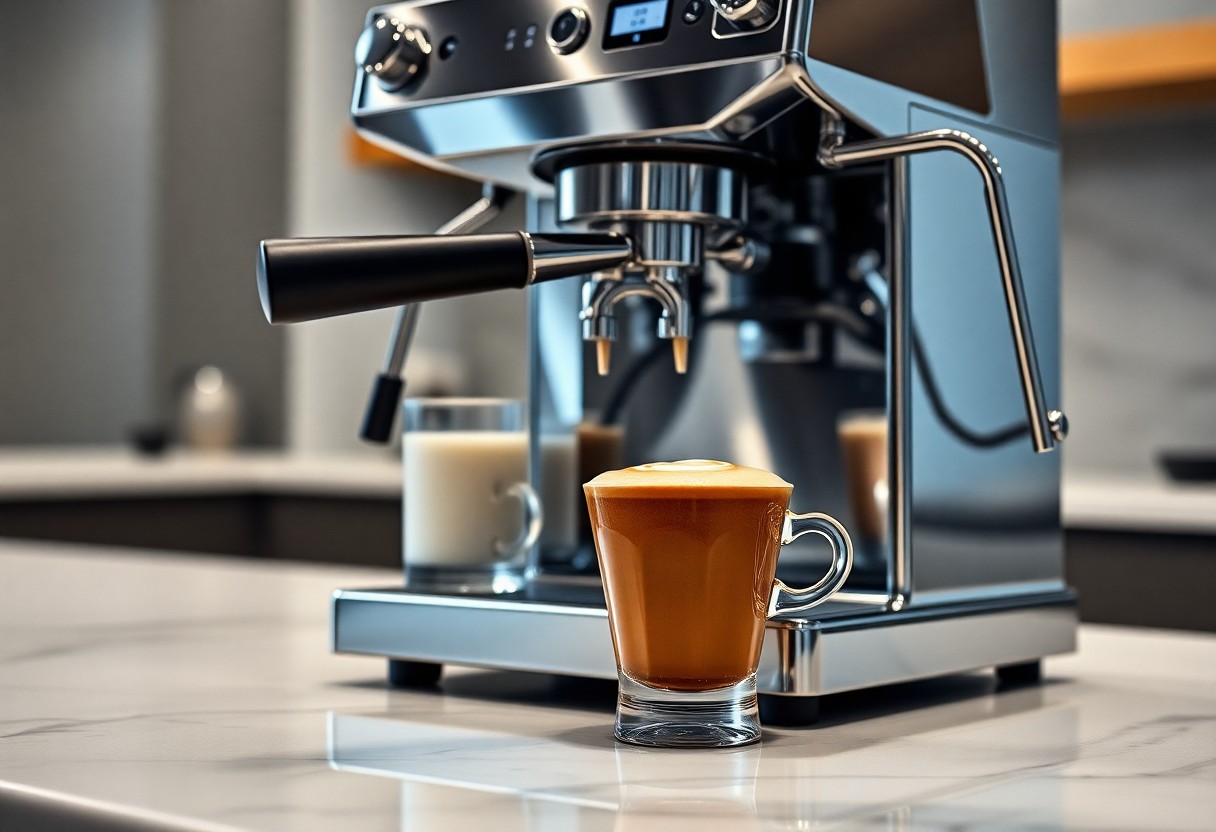
Maintenance and Care: Ensuring Longevity in Frothing Performance
Regular maintenance is important for keeping your coffee machine’s frothing performance at its peak. Building up residue or neglecting regular check-ups can lead to decreased efficiency and subpar frothing results. Ensuring that your machine is clean and well-maintained not only prolongs its lifespan but also enhances your coffee experience. A few simple habits, such as immediate cleaning after each use and routine inspections, can make a significant difference in maintaining optimal milk frothing.
Cleaning Techniques for Frothing Equipment
To maintain your frother’s efficiency, adopt a routine cleaning technique. Begin by rinsing the frothing wand with hot water immediately after use to remove milk residue. Periodically, soak the wand in a solution of water and a few drops of dish soap, followed by rinsing thoroughly. For machines with a steam wand, ensure you utilize a cleaning brush to clear any blocked holes. Additionally, many manufacturers provide specific cleaning solutions tailored for their machines, ensuring you uphold high hygiene standards.
Troubleshooting Common Frothing Issues
If you encounter common frothing issues, don’t panic; diagnosing the problem can often lead to simple solutions. Low steam pressure could result from clogged nozzles or an insufficiently heated machine, while inconsistent froth quality might stem from the type of milk or improper technique. Always check that your milk jug is cold and the right size to allow sufficient air incorporation. A few adjustments can usually remedy any frothing frustrations.
Inconsistent frothing can frustrate your cappuccino-making experience. If you notice weak or watery froth, check the milk’s fat content, as low-fat options often yield disappointing results. Ensure that your steam wand is angled correctly within the milk jug and that you’re using fresh milk. Performing regular maintenance, including descaling the machine, can also ensure optimal pressure and temperature, important for perfect froth. When all else fails, consulting your machine’s manual can provide specific insights tailored to your model.
Final Words
Summing up, the best coffee machine for cappuccino with excellent milk frothing capabilities is one that meets your specific needs and preferences. Look for features like adjustable milk frothers, ease of use, and consistent temperature control to ensure optimal results. Whether you prefer an automatic machine or a manual option, having the right equipment can elevate your coffee-making experience and help you create café-quality cappuccinos in the comfort of your home.
FAQ
Q: What features should I look for in a coffee machine for making cappuccinos?
A: When choosing a coffee machine for cappuccinos, look for features like a built-in milk frother or steam wand, adjustable temperature settings, and easy-to-use controls. A machine with a dual heating system can help ensure that both the coffee and the milk foam are prepared at the optimal temperature. Additionally, consider the size and type of the machine, whether it’s an espresso maker, a super-automatic machine, or a manual option, depending on your level of expertise and convenience needs.
Q: Are manual espresso machines better for making cappuccinos than automatic ones?
A: It really depends on your preferences and skills. Manual espresso machines give you complete control over the brewing and frothing process, allowing for a more personalized cappuccino experience. They can produce high-quality espresso and foam when used correctly. However, automatic machines streamline the process, making it easier for beginners to achieve consistent results without extensive barista training. If you enjoy experimenting and have a passion for coffee, a manual machine might be ideal. On the other hand, if convenience is your priority, an automatic machine could be the better choice.
Q: How important is the quality of the milk frother in a coffee machine?
A: The quality of the milk frother is very important for creating a good cappuccino. A quality frother will produce fine, creamy microfoam rather than large, airy bubbles. This fine foam is imperative for achieving the desired texture and flavor in your cappuccino. Look for machines that feature adjustable frothing options, as this allows you to achieve your preferred milk texture. Additionally, some machines come with specialized frothing attachments that can enhance the frothing process further.
Q: Can I make cappuccinos with a regular coffee maker?
A: While a regular coffee maker can brew coffee, it typically lacks the necessary equipment to froth milk for a cappuccino. To create a traditional cappuccino, you need an espresso machine with a steam wand or a separate milk frother to achieve the right foam consistency. However, some people may use alternative methods, such as manual frothing or using a stovetop espresso maker combined with a standalone frother, though the outcome may not be as consistent as with a dedicated cappuccino machine.
Q: What is the price range for good quality cappuccino machines?
A: The price for a good quality cappuccino machine can vary widely based on features and brand. Basic models can start around $100 to $300, while more advanced machines with more features, such as integrated grinders and automatic frothers, can range from $300 to $1,000 or more. High-end commercial machines used in cafes can even exceed $2,000. It’s imperative to evaluate your budget along with the features you need to find the best value for your investment.

